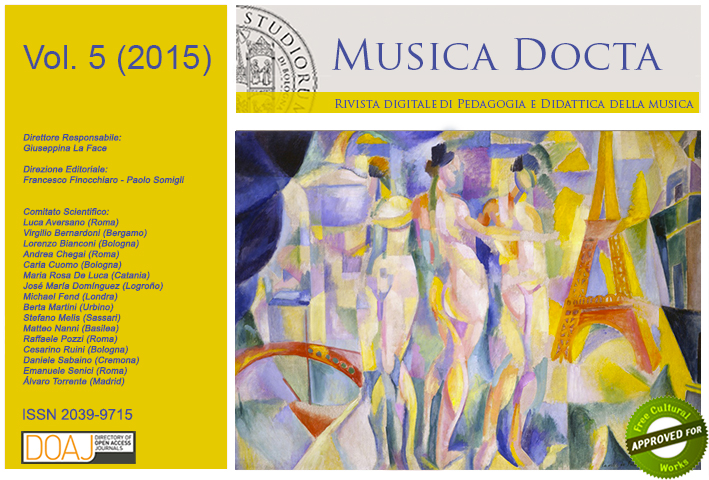Die musiktheoretische Ergründung der Arienform in italienischen Opern des 18. Jahrhunderts und die Umgestaltung des Fachs Formenlehre
DOI:
https://doi.org/10.6092/issn.2039-9715/5872Keywords:
aria, Russia, instrumental music, operaAbstract
The paper focuses on the issue of the role played by the 18th Century Italian aria within the general system of musical forms. This question is relevant for both music theory and pedagogy. Did the aria influence instrumental genres or was it the opposite?
Throughout the history of professional musical education in Russia (from the 19th century to the present day), both general music theory and courses in musical form have usually been based on instrumental music. However, studies in recent decades show that, in the process of crystallization of a number of structures and principles of composition in the first half of the 18th century, the aria takes a prominent position. Among these are such principles as the ritornello, which underlies the Baroque concerto; principles of recapitulation and ternary form that became established in Italian arias in the 1680s (earlier than in the instrumental genres), as well as the principle of thematic contrast. Italian opera played a key role in the formation of classical musical Thematik (Ger.) - not only in its lexical topoi, but also in the treatment of homophony, metric and syntactic periodicity, and the fractionality of motivic structure. The development of the two-subjects sonata form took place within the framework of da capo arias simultaneously with instrumental music (1720-1750s). The Italian aria played a decisive role in the birth of the sonata form with two initial sections typical of the classic concerto.
In the musical form course for musicologists and musicians-performers at the Russian Gnessins Academy of Music, I discuss the theory and history of music forms during the 17th and 18 th centuries, taking into account all these factors. This method introduces significant adjustments in the traditional practice of music form teaching in Russia, thereby bringing the understanding of students closer to the real processes that occurred in the music history of the 18th century.
Downloads
Published
How to Cite
Issue
Section
License
Copyright (c) 2015 Irina Susidko
The copyrights of all the texts on this journal belong to the respective authors without restrictions.
This journal is licensed under a Creative Commons Attribution Share-Alike 4.0 International License (full legal code).
See also our Open Access Policy.
Metadata
All the metadata of the published material is released in the public domain and may be used by anyone free of charge. This includes references.
Metadata — including references — may be re-used in any medium without prior permission for both not-for-profit and for-profit purposes. We kindly ask users to provide a link to the original metadata record.






